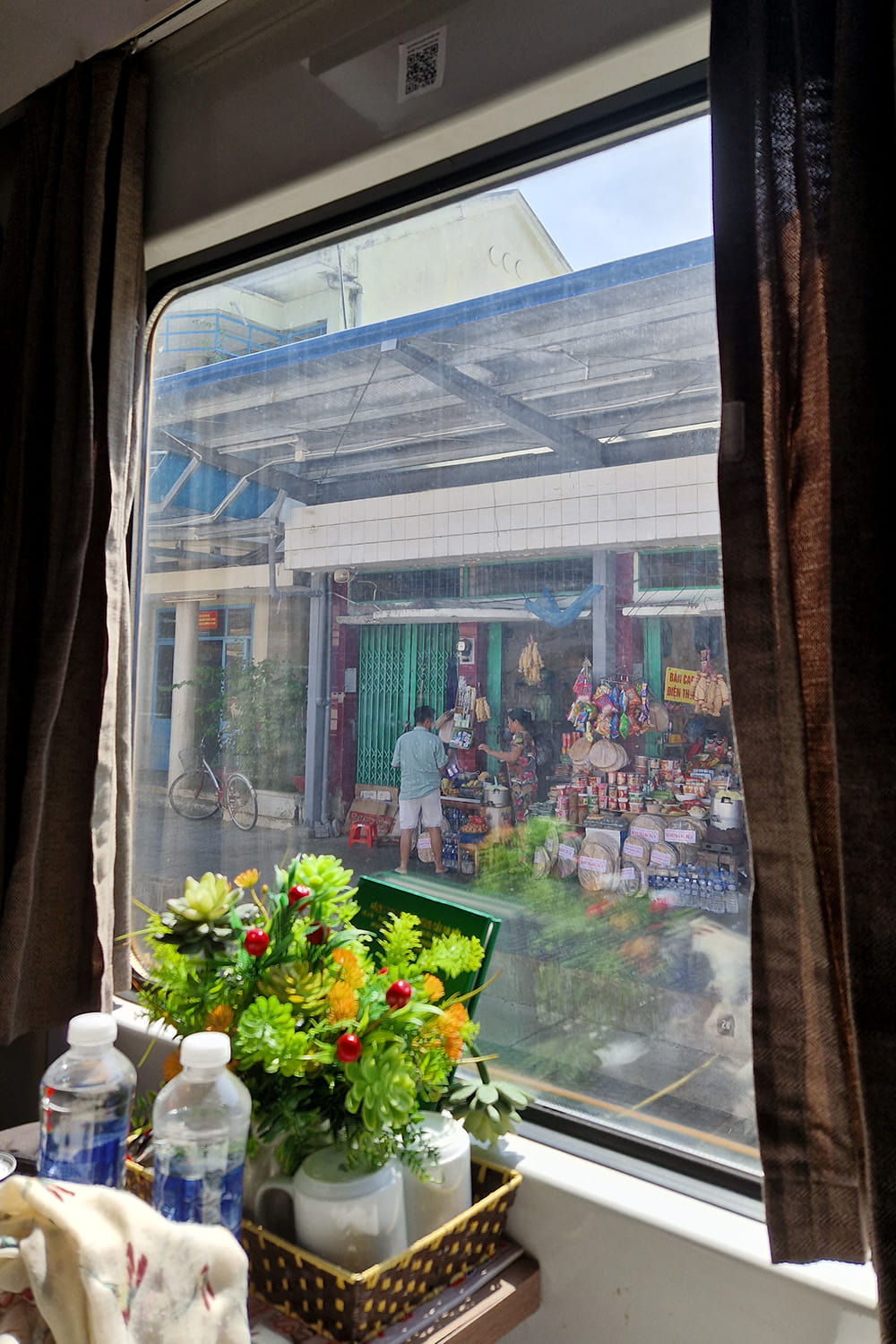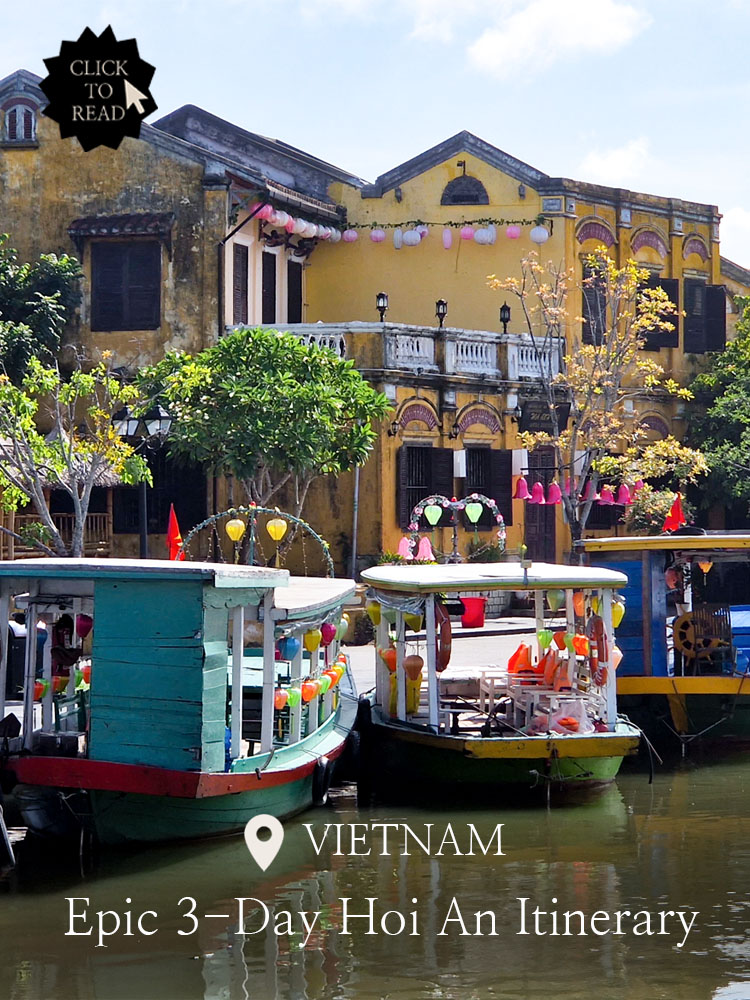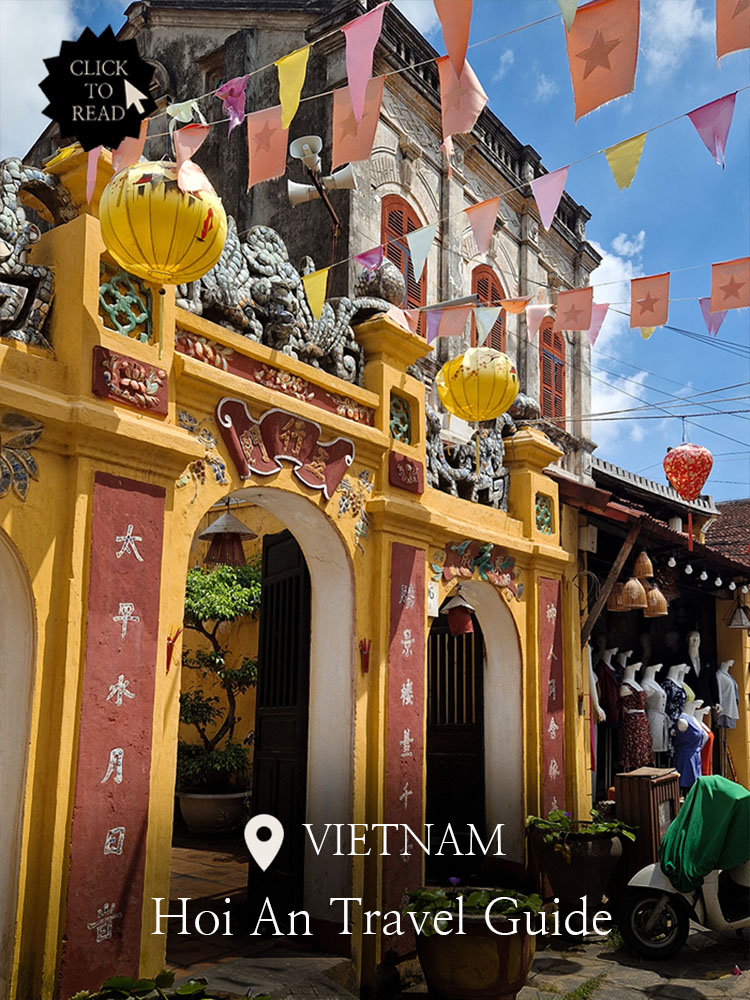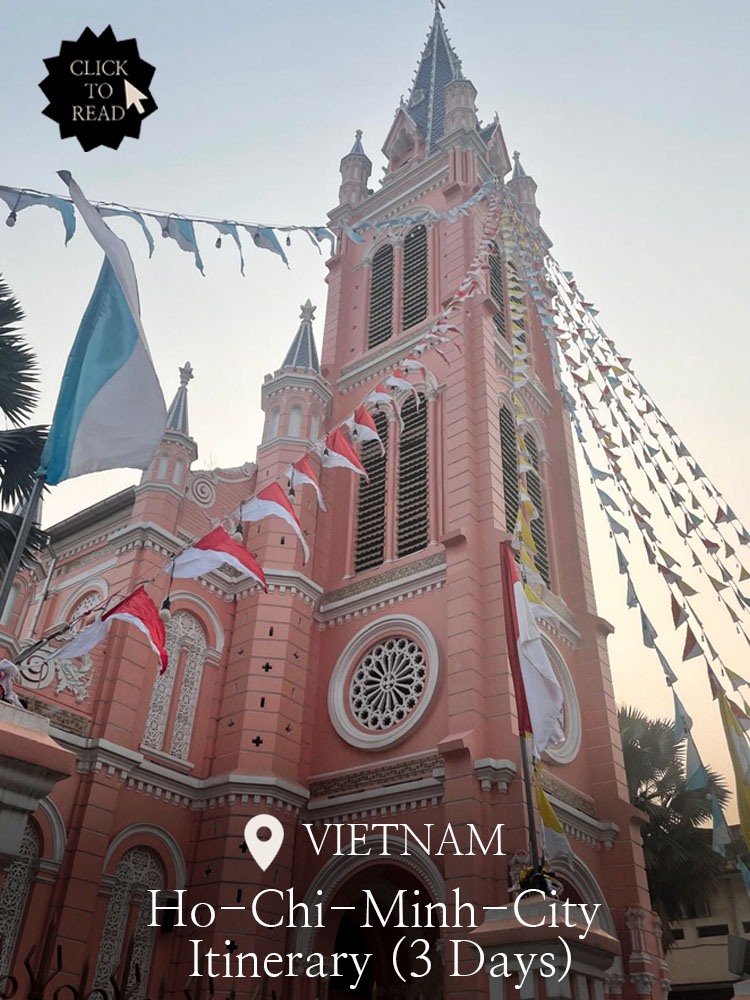Taking a Sleeper Train in Vietnam – Here is everything you need to know!
Sleeper Trains are very popular means of transportation in Vietnam. Among tourists, they are somewhat of an attraction and often-times viewed as a bucket list experience not to miss out on while travelling Vietnam. For us personally, the latter was definitely the case!
If you are reading this, then you are likely thinking about taking a sleeper train as well. However, you are looking for a bit more information on what taking a sleeper train is like before making your final decision. Either way, you have come to the right place.
In this post, we cover everything from the logistics of taking a sleeper train in Vietnam to what the trains are actually like. We tell you what to watch out for while booking and share a few essentials you should most definitely prepare before boarding your train!
Note: This post may contain affiliate links. By interacting with these links, you can support us and our website at no extra cost to you🍀! Our affiliate links are marked by an *, so you can recognise them in advance. For more information, read our Disclaimer.

A Complete Guide to Sleeper Trains in Vietnam!
Vietnam is huge. Especially, if you intend to travel its whole length from South to North or vice-versa! To give you a bit more context: a drive from Hanoi all the way down south to Ho Chi Minh City takes approximately 26 hours and covers a distance of 1.687 kilometres on the road!
When comparing this to Europe, you could roughly travel from Paris to Lisbon with such a distance – albeit the latter would take 10 hours less of your time when compared to the trip from Hanoi to Ho Chi Minh City😆.
So it is actually no wonder that Vietnam came up with some interesting transportation options when it comes to getting people places – locals and tourists alike. In this quick guide we will take a closer look at Vietnam’s Sleeper Trains. What are the most interesting routes for travellers? What essentials should you bring? Let’s find out!


Vietnam Sleeper Train Routes – Where can you travel by Sleeper Train?
Vietnam’s Sleeper Trains essentially operate on two main routes.
- The first one, and probably the most well-known route, links Hanoi and Ho Chi Minh City – also known as the Reunification Express – thus covering basically the whole length of Vietnam and passing a great many stations and destinations (among them e.g. Nha Trang, Da Nang, and Hue) along the way.
- The second train route can take you from Hanoi all the way up North to Lao Cai and is commonly used by tourists to get to Sapa.
Now, it is important to know that each route is frequented by a number of different trains. All trains are operated by Vietnam Railways, Vietnam’s state-owned railway company. However, most trains do not only consist of Vietnam Railways carriages. They usually also journey with a number of privately-owned carriages from various other companies (e.g. Lotus Train, Charmy Express, Chapa Train, etc.). The latter are mostly catered towards tourists and will offer a more luxurious and comfortable (albeit slightly more expensive) experience when compared to their state-owned peers. Depending on what exact section of the route you wish to journey on by train, the types of carriages available will vary.

✅ The Most Popular Sleeper Train Routes for Travellers
Down below you’ll find a list of popular Vietnam Sleeper Train sections. We also give you further information on the duration of each section, the train companies operating carriages on them, some additional things to watch out for when booking as well as our personal recommendations at the end.
Ho Chi Minh City to Da Nang
- Duration: 19 hours.
- Available Carriages: Vietnam Railways.
- Check options via 12 Go Asia*.


This section of the route is a great way to travel from South Vietnam to Central Vietnam in one go and therefore a good alternative for those of you that do not wish to fly.
Make sure to book the train that leaves in the evening. That way you still have the full day to explore Ho Chi Minh City before making your way to the train station after dinner. Get your night’s rest on the train and catch the sunrise over stunning rural as well as coastal landscapes the next morning. Somewhere around 3 p.m. you will reach Da Nang, from where you can easily make your way to Hoi An.
This is the sleeper train section that we personally chose to go on during our time in Vietnam. And it was quite an enjoyable one. I will say though, we booked a 2 berth cabin (on their VIP car) for this trip, so it was only the two of us for the entire journey. This particular cabin however seems to currently be unavailable. So if you were hoping for a cabin that sleeps 2 instead of 4 people, you might want to consider one of the other overnight train journeys.


Ho Chi Minh City to Nha Trang (& vice-versa)
- Duration: 8 hours.
- Available Carriages: Vietnam Railways & Charmy Express.
- Check options via 12 Go Asia*.
If you are not quite ready to leave the South of Vietnam yet, then consider making your way to Nha Trang from Ho Chi Minh City. Nha Trang is well-known as a beach destination with its top attractions being island hopping, snorkelling and spending time on its fine-sand beaches. From here you can also make your way to Da Lat (~3 hours by bus).
Do know that if you decide to embark on this particular train journey over night, then you probably won’t get to see much along the way as the train will journey mostly through the dark.
Hanoi to Da Nang (& vice-versa)
- Duration: 17 hours.
- Available Carriages: Lotus Train, Laman Express, Violette Trains, Charmy Express, Vietnam Railways, etc.
- Check options via 12 Go Asia*.
Travelling from Hanoi to Da Nang or vice-versa on the sleeper train is quite a popular route for travellers as it is an easy way to make your way from North Vietnam to Central Vietnam (or vice-versa) in one go. And, again, a good alternative for those of you that do not wish to fly. The train leaving Hanoi will do so around 7-8 p.m. and will thus reach Da Nang at around 11 a.m. the following day.


The latter is great since you will be able to marvel at one of the most beautiful stretches of this train journey – the Cloud Pass or Hai Van Pass (a mountainous stretch in between Hue and Da Nang) while it is light out!
Hue to Ninh Binh (& vice-versa)
- Duration: 12 hours.
- Available Carriages: Lotus Train, Laman Express, Violette Trains, Vietnam Railways, etc.
- Check options via 12 Go Asia*
While taking an overnight train is a great way to travel in between North and Central Vietnam (as stated in the previous section), you should be aware that by travelling from Hanoi all the way down to Da Nang in one go you are going to miss out on two of the best destinations in all of Vietnam: Hue and Ninh Binh.
However, fret not. Because, taking a Sleeper Train between Hue and Ninh Binh is an option as well! One we would personally recommend even more so than taking a direct train between Hanoi and Da Nang!


Hanoi to Lao Cai & vice-versa
- Duration: 8 hours.
- Available Carriages: Chapa Express, Fanxipan Express, Laman Express, etc.
- Check options via 12 Go Asia*
Overall, this one is probably the most popular Sleeper Train route among tourists as it is a unique way to get to Sapa. When journeying from Hanoi to Lao Cai, trains leave somewhere between 10-11 p.m. and arrive in Lao Cai the next morning around 6 a.m. When making your way from Lao Cai back to Hanoi, there is one train journeying over-night and one leaving midday.
Do know that Sapa is located another 45-minutes by bus (up a winding mountain road) from Lao Cai. Usually you can book your transfer from Lao Cai to Sapa with the same company you are booking your overnight cabin with.
Among the companies operating on this train route, Chapa Express is the most popular one. In Lao Cai Station they even have a lounge where you can e.g. take a shower, relax for a bit after arriving and/or eat breakfast (for 150.000VND which are ~5€/6$).


🌟 The Best Sleeper Train Routes – Our Personal Recommendations
If we had to choose all over again what Sleeper Train to go on while planning our Vietnam Itinerary, our choice would likely fall on one of the following three options:
- Ho Chi Minh City to Da Nang* with Vietnam Railways. Price: ~60€/70$ p.P. for a First Class Sleeper Cabin (4x).
- Hue to Ninh Binh* with Lotus Train. Price: ~60€/70$ p.P. for a VIP Sleeper 4x Cabin or ~120€/140$ p.P. for a VIP 2 Berth Cabin.
- Hanoi to Lao Cai* with Chapa Express. Price: ~60€/70$ p.P. for a Deluxe Sleeper 4x Cabin or ~140€/160$ p.P. for a VIP Cabin 2x.

Note: If you don’t know what’s the difference between a VIP Sleeper 4x Cabin and a VIP Cabin 2x – don’t worry, we will go into more detail on the different types of cabin further down below.
⚠️ What to watch out for when booking your overnight train experience
While taking an overnight train in Vietnam can be quite a fun experience, there are a few things we wanted to mention that might sour your experience. Knowing about them means you can avoid them. So let’s find out what you should watch out for when booking your trip.
1. Make sure not to arrive at your destination in the middle of the night.
Since Sleeper Trains journey through the night, they naturally also stop at a number of stations during the night. However, when booking your own train journey, we would recommend choosing a train whose schedule allows you to arrive at your destination during the day.
Why? Well, you won’t be able to call a Grab during the night and the taxi drivers waiting for you are probably going to overcharge you quite drastically knowing that you have no other option than to go with them. The latter happened to us in Ninh Binh at 4 a.m. after a sleeper bus dropped us and a few other weary travellers at the wrong spot🙃.


2. Only book a cabin on a Vietnam Railways carriage if you depart from Hanoi or Ho Chi Minh City.
We were told that the bedding on the Vietnam Railways carriages gets changed only at their departure and arrival station – meaning, fresh sheets are only going to be put on the beds in Hanoi and Ho Chi Minh City. So, if you travel with them from e.g. Da Nang to Ho Chi Minh City, then chances are high someone has already slept in your bed somewhere between Hanoi and Da Nang.
If, like us, you think this is a big no, then make sure to only book a cabin on a Vietnam Railways carriage if you depart from Hanoi or Ho Chi Minh City. If your departure point is neither of the two, maybe opt for one of the privately-owned carriages.
Note: Since only carriages operated by Vietnam Railways service the route section between Da Nang and Nha Trang, we would not necessarily recommend taking the sleeper train when travelling from Da Nang to Ho Chi Minh City specifically. Except of course if this is something you don’t care about.
3. Don’t travel by train from Hanoi to Ho Chi Minh City in one go.
We would not necessarily recommend travelling in one go from Ho Chi Minh City to Hanoi (or vice-versa). While in theory this may sound like a fun idea, this particular journey will take you nearly two full days and by the end of it you are probably going to be over it by a long way.
For the purpose of experiencing the Sleeper Train, spending one night on it will be plenty. But, at the end of the day, to each their own;).
Where to buy your Tickets for Vietnam’s Sleeper Train
The most convenient platform to book your Sleeper Train Tickets on is 12 Go Asia*. Why? Well, when searching the parameters for a specific journey, they instantly provide you with an overview of all your options: the various companies operating on this specific stretch, what types of cabins they offer plus their varying price points and the train schedules.

Alternatively, you’ll have to search the websites of each company individually, which is going to be way more time consuming. However, it can be done and while it may demand more of your time, it may occasionally save you a few dollars.
If the latter is the way you prefer to do things, then I would recommend starting by checking the official Vietnam Railways website. They provide an English version of their website, which is still mostly in Vietnamese😆. However the most important bits of text will be translated to English.
🎫 Do I need to buy my tickets in advance? If yes, how far in advance?
The answer to this question is quite simple: Yes, we generally recommend booking your train tickets in advance! How far in advance will depend on what you are looking for. If you are set on booking a cabin with only two berths, 1-2 months in advance is a good measure. Cabins that only sleep 2 people tend to be booked out the quickest.
If you are looking to book a cabin that sleeps 4 people, you may have more wiggle room. Especially if you DON’T travel during peak tourist season, on weekends or during national holidays. In that case we would even encourage booking a tad more last minute. Because, booking only a few days or 1-2 weeks prior to your trip may get you the same cabin for only a fraction of the price. However, again, with the added risk that your preferred train company or cabin type may be booked out.

At the end of the day, it depends on how set you are on booking a specific cabin from a specific company or if you are more flexible when it comes to cabin choice.
What are Vietnamese Sleeper Trains Like?
But, what are overnight trains in Vietnam even like? In this section, we will tackle all your question surrounding the layout and comforts (or lack thereof) of Vietnam’s famous Sleeper Trains. Is there food on board? What are the cabins like? Are there western toilets? And so much more!
🛏️ Quick Overview of the types of cabins on a Sleeper Train
Since the topic of this post is Vietnam’s Sleeper Train, we will focus on the different types of cabins that actually have berths/beds. Do know that each train also has several carriages where there will be standard seats. You can book the latter for overnight journeys as well. We would not necessarily recommend it though.
The sleeper cabins can most easily be distinguished by looking at how many people each cabin sleeps. As such, you can choose between three types of cabins:
- 6x Sleeper Cabin, with 3 beds on each side, i.e. 6 beds per cabin total,
- 4x Sleeper Cabin, with 2 beds on each side, i.e. 4 beds per cabin total, or
- 2x Sleeper Cabin, with 1 bed on each side, i.e. 2 beds per cabin total.


However, depending on what carriage operator you are going with, there may be quite substantial differences in the design and comforts of the cabins, even if on the surface they are the same type of cabin. In other words, sleeping in a 4x Sleeper Cabin operated by Vietnam Railways will quite likely feel less luxurious when compared to sleeping in a 4x Sleeper Cabin operated by Chapa Express.
Also, it may be good to know that Vietnam Railways is actually the only company that offers 6x Sleeper Cabins. Most other companies will offer a variety of 4x Sleeper and 2x Sleeper Cabin options.
❓ FAQ about Vietnam’s Sleeper Trains


Essentials to bring on the Sleeper Train
Down below you can find a short list of things we would deem essential to bring on your next journey on one of Vietnam’s famous Sleeper Trains. Some of these items are a MUST no matter what cabin you booked. Others are more useful in specific scenarios. Let’s have a look, shall we?
- 🔌 Power Plug Adapter. Train cabins may have USB outlets as well as standard sockets. So, do make sure to have your power plug adapter at hand in case you need it.
- 💶 Cash. As mentioned in our Vietnam Travel Checklist, payment by cash is often the preferred or only way of payment. If you intend to buy something from e.g. the food cart, make sure to have cash on you.
- 📖 Entertainment. Whether that be a book, a show you download prior to the train journey, music or something else, do prepare a way to pass your time while on the train!
- 🍘 Snacks. We would recommend bringing your own snacks for this trip. While available, the snack selection on the train is quite limited.
- 🧻 Toilet Paper. This will depend on the company you book your cabin with, however if your train carriage is operated by Vietnam Railways it is very likely that toilets won’t have toilet paper.
- 🧼 Wet Towels. Generally there is no way to wash yourself on the train, which is why it may come in handy to have some wet towels on you. That way you are able to freshen up at least a little bit the next morning.
- 💤 Light Sleeping Bag Liner. If you are worried about the cleanliness of the trains, you can bring a sleeping bag liner. They do not take up too much space and may make your journey more comfortable.

Taking a Sleeper Train in Vietnam – Final Thoughts
Taking a Sleeper Train in Vietnam is not only a great bucket list experience, but also an exciting and alternative way to travel big distance in Vietnam. So, if you need to make your way e.g. from Vietnam’s South/North to Central Vietnam, we highly recommend considering taking a Sleeper Train instead of flying at least once! Especially, if time and your itinerary allow you to!
We hope with this post we managed to answer most of your questions related to taking a Sleeper Train in Vietnam! If there are any, feel free to leave your remaining questions in the comments down below.
Save this post for later if your trip isn’t for another while! And, finally, we wish you safe and happy travels!🍀
Are you looking for more information to plan the most amazing trip to Vietnam?
or



